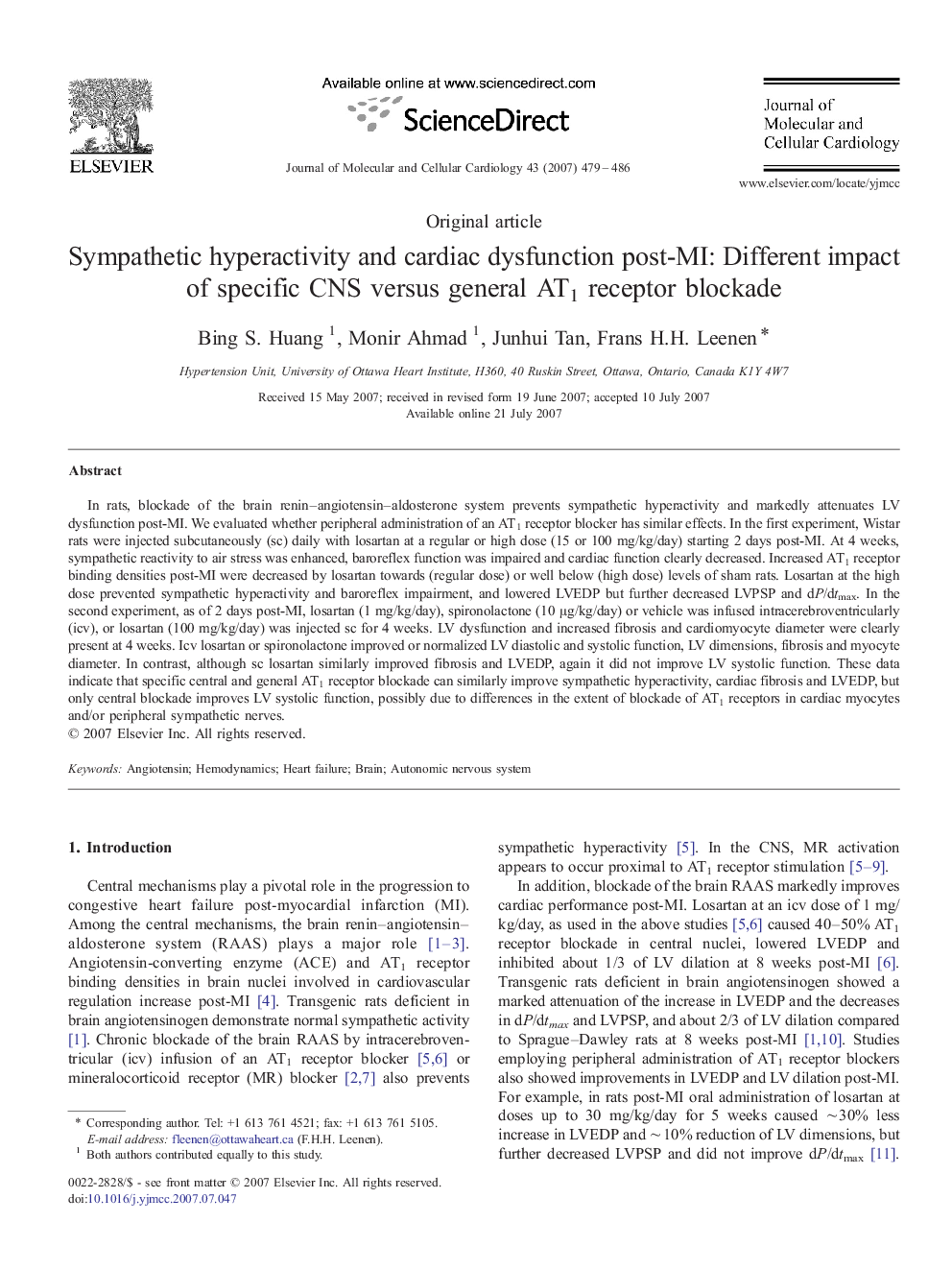| Article ID | Journal | Published Year | Pages | File Type |
|---|---|---|---|---|
| 2191929 | Journal of Molecular and Cellular Cardiology | 2007 | 8 Pages |
In rats, blockade of the brain renin–angiotensin–aldosterone system prevents sympathetic hyperactivity and markedly attenuates LV dysfunction post-MI. We evaluated whether peripheral administration of an AT1 receptor blocker has similar effects. In the first experiment, Wistar rats were injected subcutaneously (sc) daily with losartan at a regular or high dose (15 or 100 mg/kg/day) starting 2 days post-MI. At 4 weeks, sympathetic reactivity to air stress was enhanced, baroreflex function was impaired and cardiac function clearly decreased. Increased AT1 receptor binding densities post-MI were decreased by losartan towards (regular dose) or well below (high dose) levels of sham rats. Losartan at the high dose prevented sympathetic hyperactivity and baroreflex impairment, and lowered LVEDP but further decreased LVPSP and dP/dtmax. In the second experiment, as of 2 days post-MI, losartan (1 mg/kg/day), spironolactone (10 μg/kg/day) or vehicle was infused intracerebroventricularly (icv), or losartan (100 mg/kg/day) was injected sc for 4 weeks. LV dysfunction and increased fibrosis and cardiomyocyte diameter were clearly present at 4 weeks. Icv losartan or spironolactone improved or normalized LV diastolic and systolic function, LV dimensions, fibrosis and myocyte diameter. In contrast, although sc losartan similarly improved fibrosis and LVEDP, again it did not improve LV systolic function. These data indicate that specific central and general AT1 receptor blockade can similarly improve sympathetic hyperactivity, cardiac fibrosis and LVEDP, but only central blockade improves LV systolic function, possibly due to differences in the extent of blockade of AT1 receptors in cardiac myocytes and/or peripheral sympathetic nerves.
